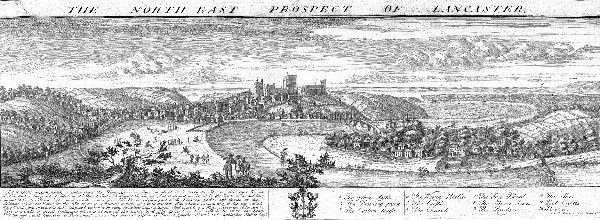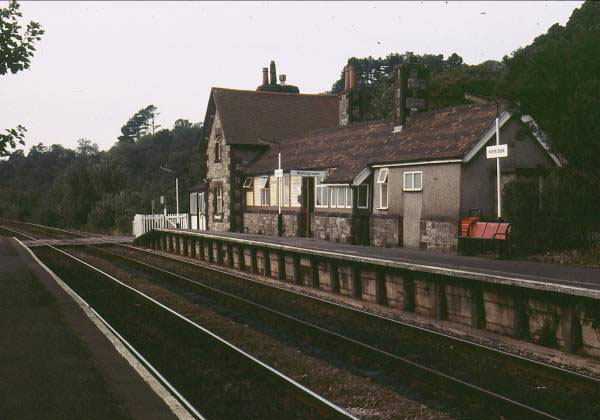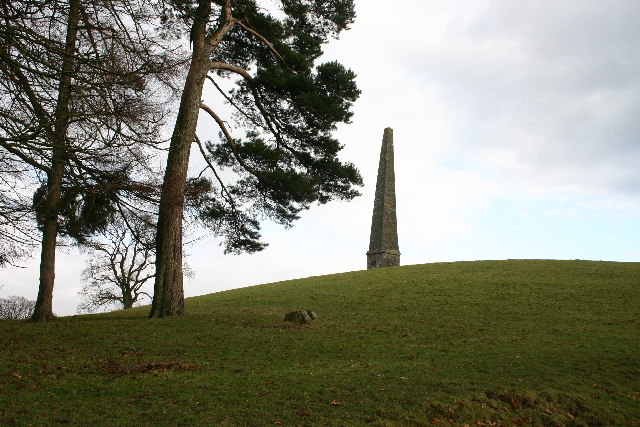|
Whittington Hall
Whittington Hall is a country house located to the west of the village of Whittington, Lancashire, England, some 3 km (2 miles) south of Kirkby Lonsdale. The house is recorded in the National Heritage List for England as a designated Grade II* listed building. It is constructed in sandstone rubble, with a slate roof, and is in Jacobethan style. The building incorporates a battlemented tower with an octagonal corner turret. History It was built between 1831 and 1836 on the site of an earlier house to a design by George Webster for Thomas Greene, M.P. On Greene's death in 1872 it passed to his eldest son, Army Officer Dawson Cornelius Greene (1822–87), who retired to live in London and was succeeded by his son, Henry Dawson Dawson-Greene. In 1887 the Lancaster architects Paley and Austin arranged alterations, including a billiard room, another staircase, and a garden loggia. The drawing room and dining room were remodelled in Georgian style in the 1930s. Henry died ... [...More Info...] [...Related Items...] OR: [Wikipedia] [Google] [Baidu] |
Whittington, Lancashire
Whittington is a small village and civil parish in Lancashire, England. It is in the Upper Lune Valley ward of Lancaster City Council and the Lancaster Rural East division of Lancashire County Council. Whittington forms part of a cluster of sites along the Lune valley, each with evidence of a motte A motte-and-bailey castle is a European fortification with a wooden or stone keep situated on a raised area of ground called a motte, accompanied by a walled courtyard, or Bailey (castle), bailey, surrounded by a protective Rampart (fortificati ... – as with Melling and Arkholme. This is the densest distribution of Norman castles outside the Welsh border countryside. St Michael's Church dates from the 13th century. Whittington Hall is a large estate surrounding a grand hall with many outbuildings. It was rebuilt in 1840, by Thomas Greene, M.P. for Lancaster. See also * * Listed buildings in Whittington, Lancashire. References External links * Castles in the Lune ... [...More Info...] [...Related Items...] OR: [Wikipedia] [Google] [Baidu] |
Lancaster, Lancashire
Lancaster (, ) is a city in Lancashire, England, and the main cultural hub, economic and commercial centre of City of Lancaster district. The city is on the River Lune, directly inland from Morecambe Bay. Lancaster is the county town, although Lancashire County Council has been based at County Hall, Preston, County Hall in Preston, Lancashire, Preston since its formation in 1889. The city's long history is marked by Lancaster Roman Fort, Lancaster Castle, Lancaster Priory, Lancaster Priory Church, Lancaster Cathedral and the Ashton Memorial. It is the seat of Lancaster University and has a campus of the University of Cumbria. It had a population of 52,234 in the 2011 census, compared to the district, which had a population of 138,375. The House of Lancaster was a branch of the List of English monarchs, English royal family. The Duchy of Lancaster still holds large estates on behalf of Charles III, who is the Duke of Lancaster. The Port of Lancaster and the 18th-century Lancas ... [...More Info...] [...Related Items...] OR: [Wikipedia] [Google] [Baidu] |
Paley And Austin Buildings
Paley may refer to: People * Albert Paley (born 1944), a modernist American metal sculptor * A. G. V. Paley (1903–1976), British military personnel * Andy Paley (born 1952), American songwriter * Babe Paley (1915–1978), American magazine editor and socialite * Dror Paley (born 1956), Canadian surgeon * Edward Graham Paley (1823–1895), English architect * Ethel Paley (1920–2019), American social worker * Frederick Apthorp Paley (1815–1888), English classical scholar * Grace Paley (1922–2007), American writer and peace activist * Henry Paley (1859–1946), English architect, son of Edward * Irina Paley (1903–1990), daughter of Grand Duke Paul Alexandrovich of Russia * John Paley (1871–1907), American writer * Maureen Paley (born 1953), American art dealer, based in London, England * Natalia Pavlovna Paley (1905–1981), French-Russian model * Nina Paley (born 1968), American cartoonist, animator and free culture activist * Philli ... [...More Info...] [...Related Items...] OR: [Wikipedia] [Google] [Baidu] |
Houses Completed In 1836
A house is a single-unit residential building. It may range in complexity from a rudimentary hut to a complex structure of wood, masonry, concrete or other material, outfitted with plumbing, electrical, and heating, ventilation, and air conditioning systems.Schoenauer, Norbert (2000). ''6,000 Years of Housing'' (rev. ed.) (New York: W.W. Norton & Company). Houses use a range of different roofing systems to keep precipitation such as rain from getting into the dwelling space. Houses generally have doors or locks to secure the dwelling space and protect its inhabitants and contents from burglars or other trespassers. Most conventional modern houses in Western cultures will contain one or more bedrooms and bathrooms, a kitchen or cooking area, and a living room. A house may have a separate dining room, or the eating area may be integrated into the kitchen or another room. Some large houses in North America have a recreation room. In traditional agriculture-oriented societi ... [...More Info...] [...Related Items...] OR: [Wikipedia] [Google] [Baidu] |
Country Houses In Lancashire
A country is a distinct part of the world, such as a state, nation, or other political entity. When referring to a specific polity, the term "country" may refer to a sovereign state, state with limited recognition, constituent country, or dependent territory. Most sovereign states, but not all countries, are members of the United Nations. There is no universal agreement on the number of "countries" in the world, since several states have disputed sovereignty status or limited recognition, and a number of non-sovereign entities are commonly considered countries. The definition and usage of the word "country" are flexible and have changed over time. ''The Economist'' wrote in 2010 that "any attempt to find a clear definition of a country soon runs into a thicket of exceptions and anomalies." Areas much smaller than a political entity may be referred to as a "country", such as the West Country in England, "big sky country" (used in various contexts of the American West), "coal ... [...More Info...] [...Related Items...] OR: [Wikipedia] [Google] [Baidu] |
Grade II* Listed Houses
Grade most commonly refers to: * Grading in education, a measurement of a student's performance by educational assessment (e.g. A, pass, etc.) * A designation for students, classes and curricula indicating the number of the year a student has reached in a given educational stage (e.g. first grade, second grade, K–12, etc.) * Grade (slope), the steepness of a slope * Graded voting Grade or grading may also refer to: Music * Grade (music), a formally assessed level of profiency in a musical instrument * Grade (band), punk rock band * Grades (producer), British electronic dance music producer and DJ Science and technology Biology and medicine * Grading (tumors), a measure of the aggressiveness of a tumor in medicine * The Grading of Recommendations Assessment, Development and Evaluation (GRADE) approach * Evolutionary grade, a paraphyletic group of organisms Geology * Graded bedding, a description of the variation in grain size through a bed in a sedimentary rock * Metamorph ... [...More Info...] [...Related Items...] OR: [Wikipedia] [Google] [Baidu] |
List Of Non-ecclesiastical Works By Paley And Austin
Paley and Austin were the surnames of two architects working from a practice in Lancaster, Lancashire, Lancaster, Lancashire, England, between 1868 and 1886. The practice had been founded in 1836 by Edmund Sharpe. The architects during the period covered by this list are Edward Graham Paley, E. G. Paley and Hubert Austin. E. G. Paley had joined Edmund Sharpe in partnership in 1845. This partnership continued until 1851, when Sharpe retired, and Paley ran the business as a single principal until he was joined by Hubert Austin in 1868. The partnership of Paley and Austin continued until they were joined as a partner by Paley's son, Henry Paley, in 1886. This list covers the non-church (building), ecclesiastical works executed by the practice during the partnership of Paley and Austin; the period from 1868 to 1886. These include new houses and alterations to houses (which varied in size from large country mansions to tenement blocks), railway stations, schools and alt ... [...More Info...] [...Related Items...] OR: [Wikipedia] [Google] [Baidu] |
List Of Works By George Webster
George Webster (1797–1864) was an English architect who practised in Kendal, Westmorland. He worked mainly in domestic architecture, designing new houses, and remodelling older houses. His early designs were mainly in Neoclassical (Greek Revival) style. He later pioneered the use of the Tudor Revival style, and in some of his latest designs he incorporated Italianate features. He also designed some churches, all in Gothic Revival Gothic Revival (also referred to as Victorian Gothic or neo-Gothic) is an Architectural style, architectural movement that after a gradual build-up beginning in the second half of the 17th century became a widespread movement in the first half ... style, plus some public and commercial buildings. () Key Buildings References Citations Sources * * * {{refend Webster, George ... [...More Info...] [...Related Items...] OR: [Wikipedia] [Google] [Baidu] |
Listed Buildings In Whittington, Lancashire
Whittington, Lancashire, Whittington is a Civil parishes in England, civil parish in City of Lancaster, Lancaster, Lancashire, England. It contains 39 buildings that are recorded in the National Heritage List for England as designated listed buildings. Of these, three are at Grade II*, the middle grade, and the others are at Grade II, the lowest grade. The parish contains the villages of Whittington, Docker and Newton, and is otherwise rural. Most of the listed buildings are English country house, country houses with associated structures, smaller houses, and farm buildings. The other listed buildings include a church with a sundial in the churchyard, buildings on a model farm, three milestones, a boundary stone, and a former school. Key Buildings Notes and references Notes Citations Sources * * * * * * * * * * * * * * * * * * * * * * * * * * * * * * * * * * * * * * * * * * {{DEFAULTSORT:Whittington, Lancashire Lists of listed buildings in Lancashir ... [...More Info...] [...Related Items...] OR: [Wikipedia] [Google] [Baidu] |
Grade II* Listed Buildings In Lancashire
This is a list of Grade II* listed buildings in Lancashire, England. Blackburn with Darwen Blackpool Burnley Chorley Fylde Hyndburn Lancaster Pendle Preston Ribble Valley Rossendale South Ribble West Lancashire Wyre See also * :Grade II* listed buildings in Lancashire * Scheduled monuments in Lancashire Notes References National Heritage List for England External links {{DEFAULTSORT:Grade II listed buildings in Lancashire[...More Info...] [...Related Items...] OR: [Wikipedia] [Google] [Baidu] |
Georgian Architecture
Georgian architecture is the name given in most English-speaking countries to the set of architectural styles current between 1714 and 1830. It is named after the first four Monarchy of the United Kingdom, British monarchs of the House of Hanover, George I of Great Britain, George I, George II of Great Britain, George II, George III, and George IV, who reigned in continuous succession from August 1714 to June 1830. The Georgian cities of the British Isles were Edinburgh, Bath, Somerset, Bath, pre-independence Georgian Dublin, Dublin, and London, and to a lesser extent York and Bristol. The style was revived in the late 19th century in the United States as Colonial Revival architecture and in the early 20th century in Great Britain as Neo-Georgian architecture; in both it is also called Georgian Revival architecture. In the United States, the term ''Georgian'' is generally used to describe all buildings from the period, regardless of style; in Britain it is generally restricte ... [...More Info...] [...Related Items...] OR: [Wikipedia] [Google] [Baidu] |
English Heritage
English Heritage (officially the English Heritage Trust) is a charity that manages over 400 historic monuments, buildings and places. These include prehistoric sites, a battlefield, medieval castles, Roman forts, historic industrial sites, Listed building, listed ruins, and architecturally notable English country houses. The charity states that it uses these properties to "bring the story of England to life for over 10 million people each year". Within its portfolio are Stonehenge, Dover Castle, Tintagel Castle, and the "best-preserved" parts of Hadrian's Wall. English Heritage also manages the London blue plaque scheme, which links influential historical figures to particular buildings. When originally formed in 1983, English Heritage was the operating name of an executive non-departmental public body of the Her Majesty's Government, British Government, officially titled the Historic Buildings and Monuments Commission for England, that ran the national system of heritage prot ... [...More Info...] [...Related Items...] OR: [Wikipedia] [Google] [Baidu] |





